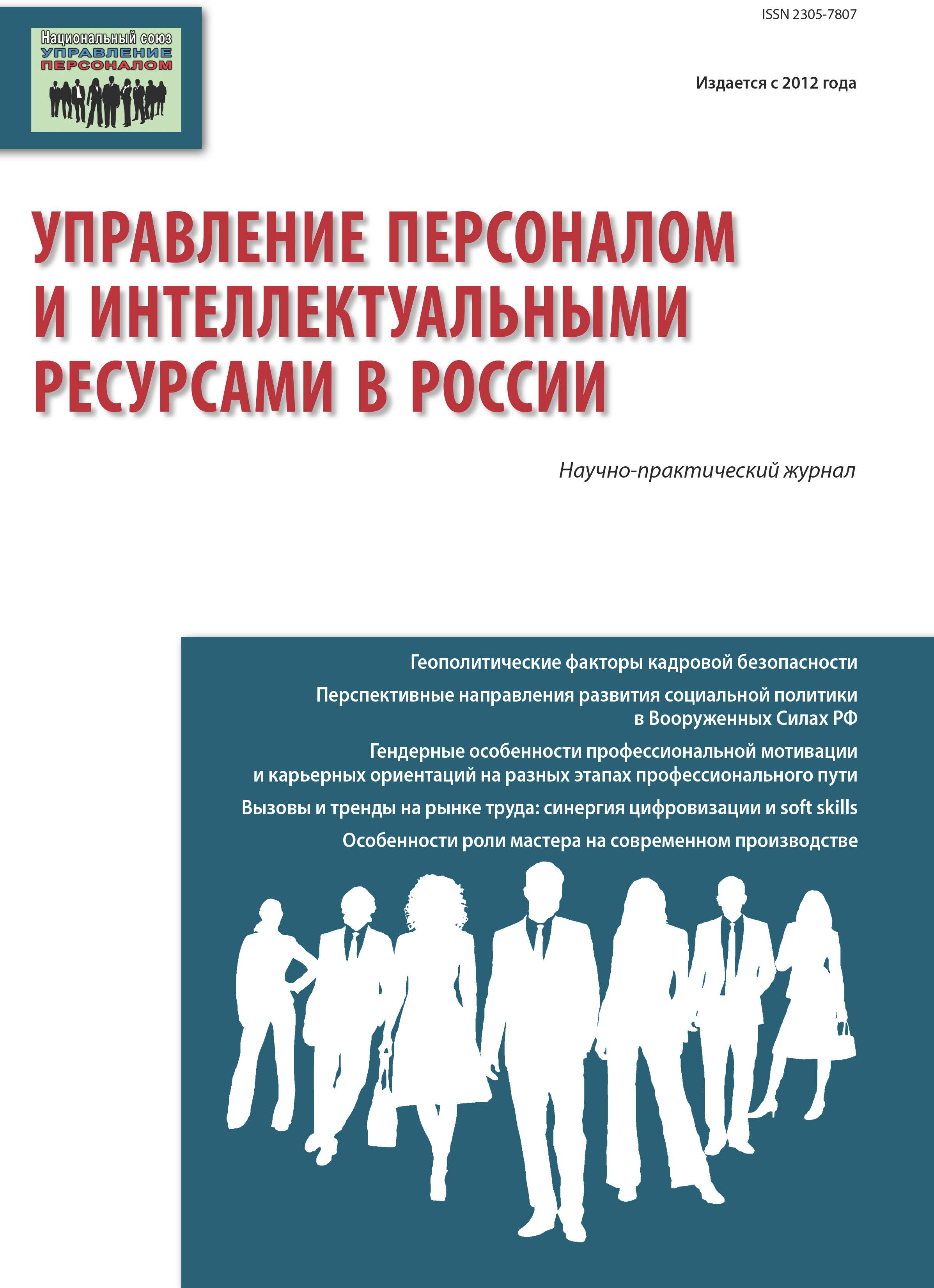Moskva, Moscow, Russian Federation
The article is devoted to the problems of using tools for employee recognition in modern practice. The main and forms of recognition, their advantages and disadvantages are considered. It summarizes research evidence supporting both the positive effects of recognition on variables such as employee productivity and retention, morale, motivation, job satisfaction, happiness and positive mood, organizational and professional commitment and engagement, and the impact of lack of recognition on employee burnout. The factors that determine the increasing importance of justifying the strategy and programs of employee recognition, as well as trends in their development, including the desire to harmonize recognition programs, alignment with business goals, talent management processes are highlighted. An analysis of the reasons for the insufficient effectiveness of employee recognition programs is presented. Recognition programs have been shown to fail due to a lack of structure for employees to recognize each other, difficulty in choosing people to express recognition, lack of clarity about the goals of recognition programs, insufficient attention to age and perceptions of recognition, and the state of organizational culture. (Leaders declare certain values, but no one in the organization gains recognition in realizing these values; competitive cultures often suppress people's desire to recognize and praise their colleagues). Recommendations for improving the effectiveness of employee recognition programs are presented.
employee recognition, engagement, organizational culture, generations
1. American Psychological Association (APA) (2015). Psychologically healthy Workplace Awards. APA.
2. Benge, M. (2018). Tailoring Recognition to Fit your Employees’ Needs. EDIS. 2018.https://doi.org/10.32473/edis-wc298-2018.
3. Brun J. P., & Dugas N. (2008). An analysis of employee recognition: Perspectives on human resources practices. The International Journal of Human Resource Management. 19, 716-730. http://dx.doi.org/10.1080/09585190801953723
4. Bush, M.C. (2018). A Great Place to Work for All: Better for Business, Better for People, Better for the World Paperback. Berrett-Koehler Publishers
5. Calk R., & Patrick, A. (2017). Millennials Through the Looking Glass: Workplace Motivating Factors. The Journal of Business Inquiry, 16, 131-139.
6. Chang, Ch., Shao, R., Wang, M., Baker, N. (2021). Workplace Interventions in Response to COVID-19: an Occupational Health Psychology Perspective. Occupational Health Science.https://doi.org/10.1007/s41542-021-00080-x.
7. Close, D., & Martins, N. (2015). Generational Motivation and Preference for Reward and recognition. Journal of Governance and Regulation. 4(3), 259-270.
8. Employee recognition in the modern workplace [Elektronnyy resurs]. Available at: https://www.octanner.com/insights/articles/2020/5/14/how_to_make_employee.html (accessed 26 April 2021).
9. Employee Recognition: Low Cost, High Impact [Elektronnyy resurs]. Available at: https://www.gallup.com/workplace/236441/employee-recognition-low-cost-high-impact.aspx (accessed 23 April 2021).
10. Generations. Global Culture Report (2021) https://www.octanner.com/in/global-culture-report/2021/generations.html
11. Gifford E. D. (2009). An examination of organizational commitment and professional commitment and the relationship to work environment, demographic and organizational factors. Journal of Social Work, 9, 386-404. http://dx.doi.org/10.1177/1468017309346232
12. Lartey, Franklin. (2021). Impact of Career Planning, Employee Autonomy, and Manager Recognition on Employee Engagement. Journal of Human Resource and Sustainability Studies. 9. 135-158.https://doi.org/10.4236/jhrss.2021.92010.
13. Lencioni P. (2012). The Advantage: Why Organizational Health Trumps Everything Else In Business. Jossey-Bass.
14. Lowe G. (2010). The healthy organization creating healthy organizations: How vibrant workplaces inspire employees to achieve sustainable success. Toronto, ON: University of Toronto Press.
15. McKinsey (2020). COVID-19 and the employee experience [Elektronnyy resurs]. Available at: https://www.mckinsey.com/business-functions/organization/our-insights/covid-19-and-the-employee-experience-how-leaders-can-seize-the-moment (accessed 26 April 2021).
16. Recognition programmes - Are they important? [Elektronnyy resurs]. Available at: https://www2.deloitte.com/ie/en/pages/deloitte-private/articles/recognition-programmes.html (accessed 23 April 2021).
17. Saks A. M. (2006). Antecedents and consequences of employee engagement. Journal of Managerial Psychology, 21, 600-619. http://dx.doi.org/10.1108/02683940610690169
18. Sowcik, Matthew & Carter, Hannah & McKee, Valerie. (2018). Reframing Recognition in Organizations. EDIS. 2018.https://doi.org/10.32473/edis-wc325-2018.
19. Talent 2020 [Elektronnyy resurs]. Available at: https://www2.deloitte.com/ie/en/pages/human-capital/articles/talent-2020.html (accessed 23 April 2021).
20. Tomorrow Half Your Company Is Quitting (So Win Them Back) [Elektronnyy resurs]. Available at: https://www.gallup.com/workplace/236216/tomorrow-half-company-quitting-win-back.aspx (accessed 23 April 2021).
21. Using Recognition and Other Workplace Efforts to Engage Employees [Elektronnyy resurs]. Available at: https://www.shrm.org/hr-today/trends-and-forecasting/research-and-surveys/Documents/SHRM-GloboforceEmployeeRecognition%202018.pdf (accessed 26 April 2021).







